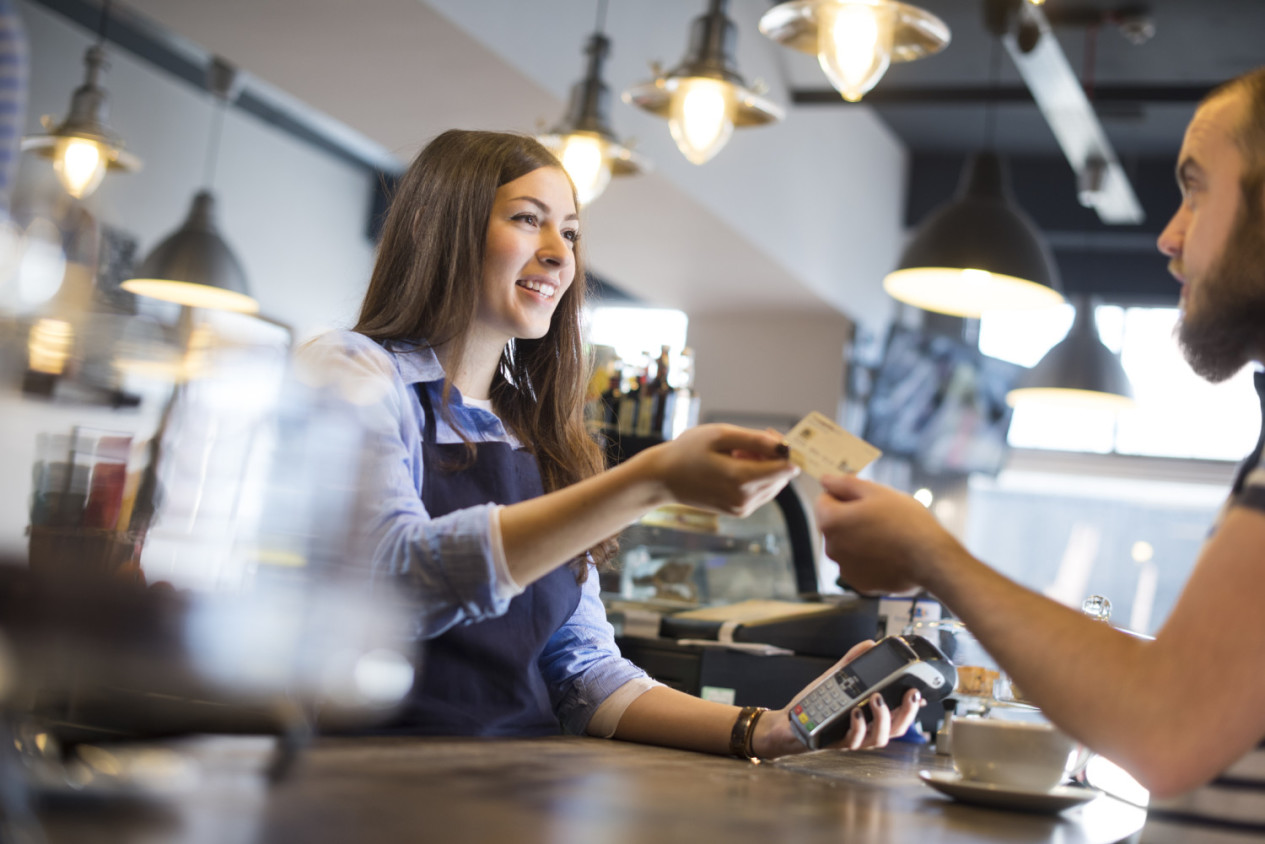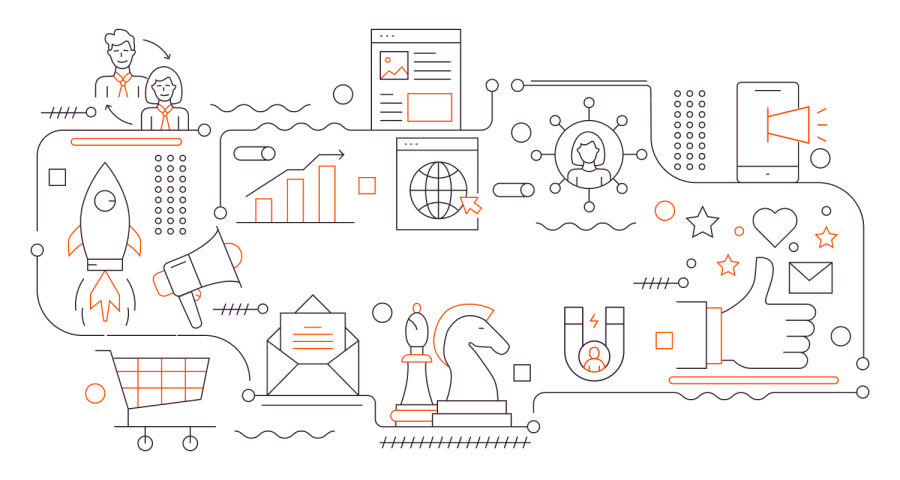//
Jul 18, 2022
Everything You Need to Know About Customer Loyalty Programs
BRAND LOYALTY PROGRAMS
It’s something all businesses strive for–to have customers so devoted to your brand that the mere thought of trying another business never crosses their minds. It’s one thing to gain a customer, but maintaining customer loyalty is an entirely different ball game. This is where customer loyalty programs come in.
Your customers are the heart and soul of your business, which is why keeping them happy is a necessity. Maintaining their loyalty should be at the top of your list of goals. In fact, according to , it costs nearly 5-10 times more to gain new customers than keep an existing one, and existing customers spend 67 percent more than new ones. This is among the various reasons loyalty programs can be a driver of marketing success.
So what is it about customer loyalty programs that keep consumers happy?
Not all are perfect, but the right combination of rewards and incentives can keep customers coming back for more. To help you get started, here’s everything you need to know to build a strong loyalty program.
You can't have inbound marketing without a powerful CRM to back it up!
Not 100% on what a CRM can do for your business? Watermark is offering free self-serve training videos to guide you on how a CRM can enhance your sales and marketing teams.
WHY CUSTOMER LOYALTY PROGRAMS WORK
There are several types of loyalty programs, but not all of them keep customers happy and encourage purchases. Successful loyalty programs work because of one concept–they incentivize. Good loyalty programs give consumers a reason–a good reason–to participate and work towards rewards.
For consumers to join and stay active in your loyalty program, they need to not only see value in it but also need to see that the reward is worth their time and most often, money. To ensure your rewards program is successful, it should:
- Nurture: Customers at every level of the need to feel like they are important to your business. For example, reach those at the start of the buyer’s journey by offering a deal for simply enrolling in the loyalty program.
- Reward More Than Purchases: While purchases are usually the number one way to earn rewards, consider offering rewards for other interactions, such as referrals, so your customer doesn’t feel overly pressured to buy.
- Offer Member-Only Deals: Why should a consumer be part of your loyalty program if they can get all the same deals without enrolling? Make sure loyalty members know they are special by rewarding them with member-only sales, discounts and deals.
TYPES OF CUSTOMER LOYALTY PROGRAMS
Loyalty programs come in all shapes and sizes, and they can be customized to fit your consumers’ specific wants and needs. The most common types of loyalty programs fall into one of the following categories:
- Loyalty cards
- Points Systems
- Tier Systems
- Cash-back rewards
LOYALTY CARDS
Loyalty cards are perhaps the simplest and least-expensive loyalty program option. They often center around a discount or free item, which is earned after a certain amount of purchases. For example, they may offer something like “buy 10 24oz. smoothies get one free,” or Get 5 haircuts and get a 15% discount off the 6th.”
These loyalty programs are often the go-to for small businesses not only because they are less expensive, but they require little-to-no record keeping by your business. Each customer is presented a physical card, which is either stamped or punched for every purchase or visit to your business. This can even be digitized through mobile applications like .
Although it ended in September 2016, loyalty program put a unique twist on a digital loyalty card. For every four entree purchases, customers earned a free entree. For each free entree they earned, customers moved up to a spice (mild, medium, etc.), or new level of rewards.
LOYALTY POINTS SYSTEM
Loyalty programs based on points usually allow consumers to “make purchases” once they’ve earned enough points. For these types of programs, you can assign a certain dollar value to each point (e.g., $1 = 1 point) or assign a set point value to certain activities (e.g., refer a friend = 50 points).
Once customers reach certain point levels, they can then cash in those points for discounts or free items. For example, Dunkin’ Donuts’ and Southwest’s loyalty programs run on a points system. In the Dunkin’ app, customers earn one point for every dollar spent, and after earning 150 points, they earn a free drink of any size.
rewards miles to customers when they purchase flights. Based on the flight fare and distance being traveled, customers will earn different amounts of points. Customers can then use their earned points to pay for future flights.
LOYALTY TIER SYSTEMS
Tier systems are similar to point systems. They usually have members earn points based on purchases or actions, and at certain point levels, members move up to different tiers with additional perks and benefits.
However, many of these rewards programs have time constraints and require you to maintain a points level within a year. If members fail to do this, their rewards may expire or they will be moved down to a lower rewards tier.
Starbucks’ reward system is a great example of a tier system. For every dollar spent, members earn one star. Every member starts out at the “Green level,” but after earning 300 stars, members become “Gold level,” receiving their own personalized gold Starbucks card and additional free beverage and food opportunities. Forbes even calls the Starbucks mobile app a rather than simply a rewards app.
CASH-BACK REWARDS
Cash-back rewards programs are most commonly associated with credit card companies. For each purchase, cardholders earn a certain percentage of cashback. However, cash-back programs aren’t just for credit cards. They are also becoming popular in other industries.
According to , many grocery store chains now offer gas discounts with a membership card. In addition, travel sites like The Guestbook offer five percent cash back on certain bookings, and TXU Energy is offering cash back to customers that use less energy each month.
first introduced the cashback program to its credit card customers, and today, many other companies have followed suit. For Discover cardholders, each purchase earns a varying percentage of cash back, which can then be exchanged for a gift card, applied as a statement credit or directly deposited to a bank account.
Finding the right rewards program for your business starts by . The best customer loyalty programs take customers’ needs and provide a rewards system that not only provides value but also builds brand loyalty. Once you understand what your customers are looking for, you can then build a program that will benefit you and them.
About Watermark:
As an marketing agency, we strive to captivate your audience and elevate your brand through Smart Design and Creative Solutions. We believe marketing is a collaborative effort, achieved by practicing agility and working cohesively with your team, not for it. Using data-driven solutions, we implement the best practices necessary to help your business exceed KPIs.
Take your marketing to the next level with a free assessment:
Ready to start the conversation? Speak with our senior digital consultant today.







